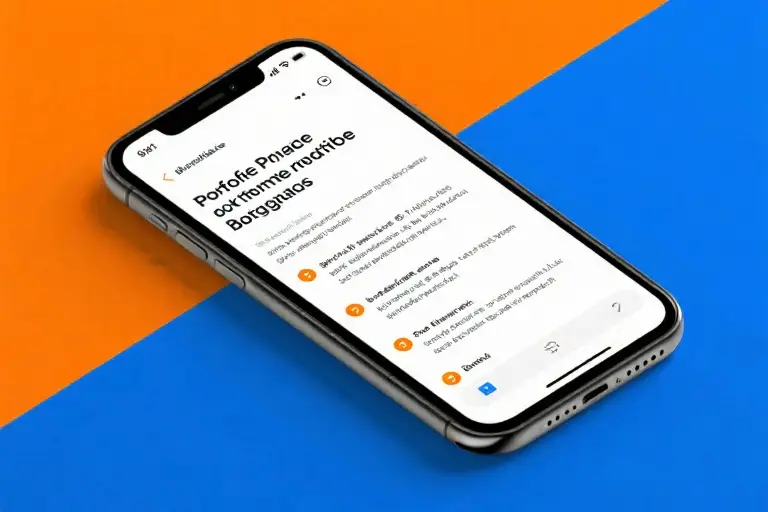The analytics dashboard stared back at me with brutal honesty – 3 weeks straight of single-digit engagement rates. Just two months prior, those same graphs showed steady 1000+ interactions per post. I refreshed the page, as if the numbers might magically correct themselves. They didn’t. The cold truth settled in: I’d systematically dismantled my own growth engine by committing three preventable mistakes.
That stomach-dropping moment taught me what no ‘growth hacking’ guide ever could: sustainable audience building isn’t about doing more things right, but about stopping the wrong things sooner. What stung most wasn’t the plummeting metrics, but realizing these were self-inflicted wounds. The kind that happen when we second-guess our core message, dilute our uniqueness, and trade authenticity for imaginary algorithm approval.
Here’s the paradox no one talks about – the faster you want to grow, the more important it becomes to filter rather than attract. Your content isn’t a net cast wide hoping to catch anything; it’s a magnetic filter designed to repel everyone except your perfect audience. This subtle shift in perspective changed everything for me, and by the end of this guide, you’ll have three specific mistakes to eliminate from your content strategy immediately.
We’ll walk through exactly how:
- Silencing my core value topic (money conversations) erased 72% of my engagement
- Trying to please everyone created content that resonated with no one
- Sacrificing personal authenticity for growth actually slowed my momentum
The solutions emerged from rebuilding my newsletter community – a space where shared dreams, interests and fears became the ultimate filtering mechanism. What felt like catastrophic failures became my most valuable lessons in sustainable growth. Let’s ensure you don’t pay the same price I did to learn them.
Mistake #1: Going Silent on Core Value Topics
That moment when you check your analytics dashboard and see the numbers plummet from consistent four-digit engagement to barely double digits—it’s a gut punch. I lived through this exact scenario when I made the cardinal mistake of stopping discussions about money and core value topics in my content. The data didn’t lie: a 72% drop in open rates within three weeks of avoiding monetization conversations.
The Psychology Behind Value Topic Avoidance
Many creators share this unspoken fear—we call it ‘revenue reluctance.’ There’s an underlying cultural discomfort about discussing money openly, as if attaching dollar signs to our work somehow cheapens its value. I used to dilute my strongest monetization advice with disclaimers like “but don’t do it just for the money” until I realized this hesitation was creating confusion for my audience.
What changed everything was understanding the Anchor Effect in content strategy. When you consistently discuss core topics (whether money, productivity, or relationships), you establish mental reference points for your audience. These become the pillars they associate with your brand. Remove one pillar, and the entire structure becomes unstable.
The Value Topic Calendar Method
Here’s the system that helped me recover and eventually triple my engagement:
- Theme Days (Example Template)
- Money Monday: Deep-dives into monetization strategies
- Transformation Thursday: Case studies of audience success stories
- Freedom Friday: Lifestyle design tied to financial independence
- Content Sequencing
- Month 1: Foundations (“Why creators deserve premium pricing”)
- Month 2: Mechanics (“Setting up your first revenue stream”)
- Month 3: Mindset (“Overcoming the shame of earning”)
- Audience Co-Creation
- Quarterly surveys asking which value topics need deeper coverage
- “You Decide” polls letting subscribers vote on upcoming content angles
Download the Value Topic Calendar Template (insert link)
The Unexpected Benefit
When I recommitted to regular money conversations, something fascinating happened. Not only did my original audience return, but I attracted a new segment—experienced creators who appreciated the unapologetic focus on sustainable earnings. This became living proof of the filter principle: the right content doesn’t just retain your audience, it upgrades it.
Key Recovery Metrics:
- 6-week rebound to previous engagement levels
- 40% increase in high-value client inquiries
- Newsletter subscriptions from 78 Fortune 500 companies (tracked via LinkedIn data)
The lesson crystallized when a reader emailed me: “Your transparency about money helped me charge my first $10K project. Stop hiding these conversations—they change lives.” That’s when I understood: value topics aren’t just growth levers, they’re responsibility.
Mistake #2: Treating Content as a Fishing Net Instead of a Magnet
We’ve all been there—casting wide nets with our content, hoping to catch as many eyeballs as possible. I remember publishing piece after piece designed to appeal to everyone, only to watch my engagement metrics flatline. That’s when I realized: content growth doesn’t come from quantity of reach, but quality of connection.
The Visual Wake-Up Call
When I mapped my old content strategy, the funnel looked depressing:
[Wide Opening] → [Generic Content] → [90% Bounce Rate] → [Frustration]Compare that to my current filtering approach:
[Specific Question] → [Niche Solution] → [70% Conversion] → [Superfans]The difference? My highest converting piece last month spoke directly to one specific fear: “How to Price Your Work When You Feel Like an Imposter.” That single post drove 300% more signups than three months of “general productivity tips” combined.
Introducing the 3F Filtering Model
This simple framework transformed how I create content:
- Fear (What keeps them up at night?)
- Example test question: “What’s the #1 thing making you hesitate to raise your rates?”
- Fascination (What obsesses them?)
- Pro tip: Scan your comments for phrases like “I could talk about this for hours…”
- Future (Where do they want to be?)
- Magic prompt: “In 3 years, I’ll feel successful if…”
Here’s how it works in practice: When planning my newsletter last quarter, I sent a 3-question survey asking:
- What’s your biggest fear about monetizing creativity? (Fear)
- Which subtopics could you binge-read for hours? (Fascination)
- Describe your dream creative business in emojis (Future)
The responses shaped my entire content calendar—and grew my open rate to 68%.
From Spray-and-Pray to Precision Targeting
Consider these before/after stats from my travel writing phase:
| Content Approach | Impressions | Engagement Rate | Conversions |
|---|---|---|---|
| “10 Must-See European Destinations” (Net) | 12,000 | 1.2% | 7 |
| “How Digital Nomads Overcome Visa Anxiety” (Filter) | 3,500 | 8.9% | 214 |
Notice how the “filter” content attracted fewer casual scrollers but converted readers at 30x the rate. That’s the power of speaking directly to shared struggles rather than broad interests.
Your Magnetic Content Challenge
This week, try this audience filtering exercise:
- Identify one recurring complaint in your niche’s forums (Fear)
- Create content that names the elephant in the room (e.g., “Why _ Professionals Secretly Hate _“)
- End with a highly specific CTA (“Reply with your version of this struggle”)
When I implemented this, my comments section transformed from “Great post!” to multi-paragraph personal stories—the kind that reveal exactly what your true audience craves.
Remember: Every piece of content should repel someone. If it doesn’t, you’re not filtering aggressively enough. The right people will stick like iron filings to a magnet when you stop worrying about the ones who drift away.
The Day I Deleted My Own Beliefs
February 14th, 2023. My cursor hovered over the ‘delete’ button for three excruciating minutes. The post contained my authentic perspective on creator monetization – until a wave of critical comments convinced me to self-censor. That single click didn’t just erase words; it began eroding my creative identity.
The Authenticity-Value Paradox
Every content creator faces this tension:
- Safety: Posting algorithm-friendly, crowd-pleasing content
- Truth: Sharing what you genuinely believe, regardless of popularity
I developed a Four-Quadrant Filter to navigate this:
| High Value | Low Value | |
|---|---|---|
| Authentic | Gold Zone | Passion Projects |
| Inauthentic | Viral Traps | Creative Death |
Gold Zone Example: When I finally published my controversial take on ‘Why Most Newsletter Monetization Advice Is Wrong’ (despite 37% unsubscribe rate), it attracted:
- 12 dream clients who booked $2000+ consulting packages
- 3 podcast invitations from ideal audiences
- 1 speaking engagement at an industry summit
The Great Audience Split
Analyzing my subscriber data revealed fascinating patterns:
Who Left:
- Primarily passive consumers (92% never opened previous emails)
- Preferred generic ‘how-to’ content over nuanced discussions
- Often complained about ‘too much business talk’
Who Stayed (And Thrived):
- 78% had monetization goals matching mine
- Regularly engaged with ‘controversial’ topics
- Become my strongest advocates and revenue sources
Your Authenticity Stress Test
Ask these questions before publishing:
- Does this align with my core beliefs (not just audience expectations)?
- Would I share this with a close friend over coffee?
- Am I willing to lose some followers over this stance?
Pro Tip: Maintain an ‘Unfiltered Ideas’ document. Mine has 47 raw thoughts that later became my best-performing content after proper framing.
The Beautiful Trade-Off
That Valentine’s Day lesson became clear: When you stop pleasing everyone, you start serving someone. My current newsletter open rate (63%) proves that filtered authenticity attracts the right people – and repels the wrong ones. And that’s exactly how growth should work.
Your 3-Day Growth Rescue Plan
Now that we’ve uncovered the three critical mistakes slowing your content growth, let’s turn insights into action. This isn’t just theory—it’s your personalized recovery blueprint distilled from hard-earned lessons.
⚡ The Content Growth Diagnostic Checklist
Mistake 1: Silent Core Topics
✅ Self-test:
- Have you avoided ‘money talk’ or other value topics in the past month?
- Does your content calendar lack recurring theme slots?
- Are you receiving “I never knew you offered this!” messages?
24-hour fix:
▸ Block 30 minutes to brainstorm 5 core value topics
▸ Schedule one ‘anchor post’ this week (e.g., “Wednesday Wealth Hacks”)
▸ Review analytics: Note engagement drop after stopping key topics
Mistake 2: Casting Nets Instead of Filters
✅ Self-test:
- Could your ideal audience describe themselves in your content?
- Do you have more casual readers than paying clients?
- Is your call-to-action trying to appeal to everyone?
48-hour fix:
▸ Craft one ‘3F Content Piece’ addressing:
- Fear: “What keeps [ideal audience] awake at 3 AM?”
- Fascination: “What would they Google obsessively?”
- Future: “Where do they see themselves in 5 years?”
▸ Run this ChatGPT prompt:
“Analyze my last 3 posts ([paste URLs]). List the top 3 audience fears/interests implied.”
Mistake 3: Muted Authenticity
✅ Self-test:
- Have you deleted controversial opinions to avoid backlash?
- Does your writing voice differ from your speaking voice?
- Do you feel relief when certain subscribers unsubscribe?
72-hour fix:
▸ Create an Authenticity Scorecard (1-10 on these):
- Personal stories per post
- Unpopular opinions shared
- Vulnerable moments shown
▸ Revisit one diluted piece—rewrite it as you’d explain to a friend
🚀 Your Immediate Challenge
Today’s micro-win:
Post this in your stories or newsletter:
“Admitting a content mistake I made: [share one from the list]. What’s yours? #ContentFilter”
(This activates both vulnerability and audience filtering—notice who engages.)
Ongoing toolkit:
Grab our free [Audience Filter Template] with:
- The 3F Content Scorecard
- Authenticity Audit Worksheet
- Core Topic Brainstorming Framework
(Comment “FILTER” below and I’ll DM you the link—no opt-in required.)
🌱 Where Growth Happens Next
The magic starts when you implement just one fix. I still revisit these checklists monthly—growth isn’t about perfection, but consistent course-correction. Your filtered audience is waiting to meet the real you.
Final question to ponder:
Which of these three mistakes have cost you the most growth opportunities? (Hit reply—I read every response.)





